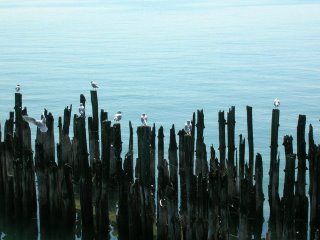
Like the Mono Basin in California, the watershed of Lake Constance has experienced the birth of mountains, the sculpting grind of glaciers, volcanic eruptions, as well as the flood of waters from glaciers melting in a warming atmosphere. About 5,000 years ago, the glaciers of the Rhine withdrew, leaving behind rolling hills of rubble. As the climate continued to warm, forests spread.
Biological Characteristics
The shallow waters and marshes along the perimeter of Lake Constance play a critical role in the lives of the 250,000 waterfowl and shorebirds that winter or nest there. In the shallow water zone that makes up only 14 percent of the lake’s surface, these birds find the water plants, mussels, and other organisms that they depend upon for food. The annual drop in the lake’s level also exposes lake bottom in which ducks forage for food during the fall.
Remaining reed marshes offer nesting and roosting areas for several threatened species of birds, including the common snipe (Gallinago gallinago). These areas not only provide critical habitat for threatened animals but also clean water running from the land before it enters the lake. In protected areas landward of the water there blossom such plants as Siberian lilies (Iris sibirica) and many kinds of orchids, as well as some threatened species such as the Lake Constance forget-me-not.
Some threatened species of birds, such as the cormorant (Phallacrocorax carbo) and several species of ducks, overwinter or rest at Lake Constance on their migration from Siberia and Scandinavia to Asia. Several species of grebe and loon, such as the arctic loon (Gavia arctica) overwinter in greater numbers at Lake Constance than anywhere else in Germany.




No comments:
Post a Comment